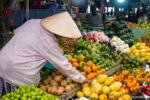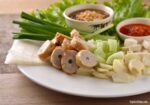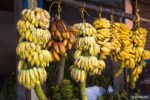Street food in Thailand is not just about eating; it’s a cultural experience that embodies the essence of Thai life. The bustling streets, vibrant markets, and mouth-watering aromas create an unforgettable atmosphere that draws locals and tourists alike. Thai street food is known for its variety, affordability, and incredible flavors, making it a must-try for anyone visiting the country. This article delves into the rich world of Thai street food, exploring its history, popular dishes, regional variations, and the experience of dining on the streets.
History and Culture of Thai Street Food
Thai street food has a long and storied history, deeply rooted in the country’s culture and traditions. It dates back to the time when food vendors roamed the streets with portable kitchens, selling their delicacies to busy urban dwellers. Over time, these vendors settled in designated areas, creating vibrant food markets that have become iconic in cities like Bangkok, Chiang Mai, and Phuket.
Street food in Thailand reflects the country’s diverse culinary heritage, influenced by Chinese, Indian, Malay, and Western cuisines. It represents a fusion of flavors and techniques, resulting in a unique gastronomic experience. The culture of street food is also intertwined with Thai social life, as it offers a communal dining experience where people from all walks of life gather to enjoy delicious meals together.
Popular Street Food Dishes
Thai street food offers an extensive array of dishes, each bursting with flavors that tantalize the taste buds. Some of the most popular street food items include Pad Thai, Som Tum, and Mango Sticky Rice.
Pad Thai, a stir-fried noodle dish, is a staple of Thai street food. Made with rice noodles, tofu, shrimp or chicken, eggs, bean sprouts, and a tangy tamarind sauce, it is garnished with crushed peanuts and lime wedges. The combination of sweet, sour, and savory flavors makes it a favorite among locals and tourists.
Som Tum, or green papaya salad, is a refreshing and spicy dish that originates from the northeastern region of Thailand. Shredded green papaya is mixed with tomatoes, green beans, peanuts, and chilies, then tossed in a flavorful dressing made of lime juice, fish sauce, and palm sugar. It is often served with sticky rice and grilled meats.
Mango Sticky Rice is a beloved dessert made with glutinous rice, fresh mango slices, and a drizzle of sweet coconut milk. The contrast between the creamy coconut milk and the juicy mango creates a delightful harmony of flavors.
Regional Variations
Thai street food varies significantly from one region to another, each offering its own unique specialties. In the north, Chiang Mai is famous for its Khao Soi, a rich and creamy curry noodle soup topped with crispy noodles and pickled mustard greens. The city’s night markets are bustling with vendors selling grilled meats, sausages, and local sweets.
In the south, Phuket is renowned for its seafood. Freshly caught fish, prawns, and crabs are grilled or fried and served with spicy dipping sauces. The island’s night markets are a paradise for seafood lovers, offering a wide variety of dishes such as Tom Yum Goong (spicy shrimp soup) and Kanom Jeen (fermented rice noodles with curry).
Central Thailand, particularly Bangkok, is a melting pot of culinary delights. The city’s street food scene is legendary, with vendors offering everything from skewered meats and noodle soups to exotic fruits and desserts. One of the must-visit spots is Chinatown, where the aroma of roasting duck and stir-frying vegetables fills the air.
The Street Food Experience
Eating street food in Thailand is an adventure in itself. The bustling atmosphere, the sizzling sounds of woks, and the vibrant colors of the dishes create a sensory overload that is both exciting and captivating. Street food vendors are skilled cooks who have perfected their recipes over generations, ensuring that each bite is a burst of authentic Thai flavor.
Street food markets are often open late into the night, making them perfect for a late-night snack or a casual dinner. They are also incredibly affordable, allowing travelers to sample a wide variety of dishes without breaking the bank. The informal setting of street food markets encourages social interaction, as diners often share tables and strike up conversations with strangers.
Sanitation and safety are important considerations when enjoying street food. While most vendors maintain high standards of hygiene, it’s advisable to choose stalls that are busy and have a high turnover of food. This ensures that the ingredients are fresh and the food is prepared on the spot. Additionally, opting for cooked food rather than raw items can minimize the risk of foodborne illnesses.
Thai street food is a culinary treasure that offers a window into the heart and soul of Thailand. Its rich history, diverse flavors, and vibrant culture make it an essential part of any visit to the country. Whether savoring a plate of Pad Thai in Bangkok, enjoying a bowl of Khao Soi in Chiang Mai, or indulging in fresh seafood in Phuket, the experience of Thai street food is one that lingers long after the meal is over. Embracing the street food culture in Thailand is not just about tasting delicious dishes; it’s about immersing oneself in the local way of life and discovering the true essence of Thai hospitality and tradition.





